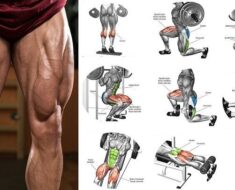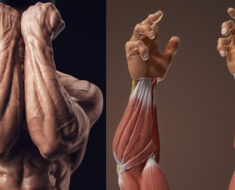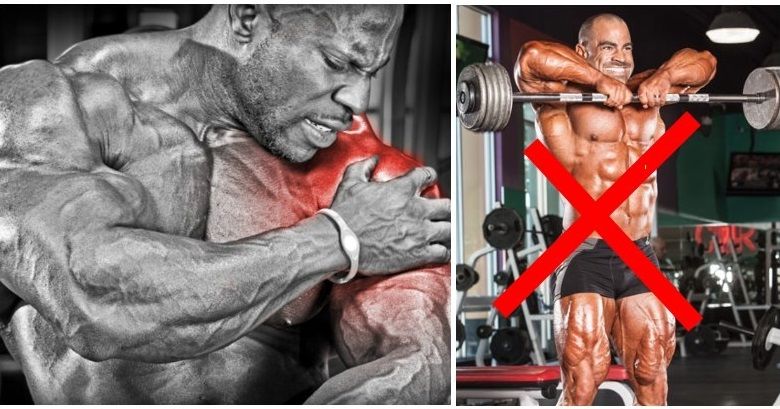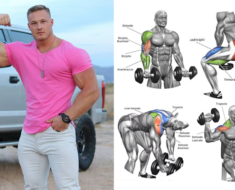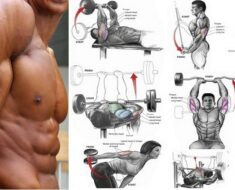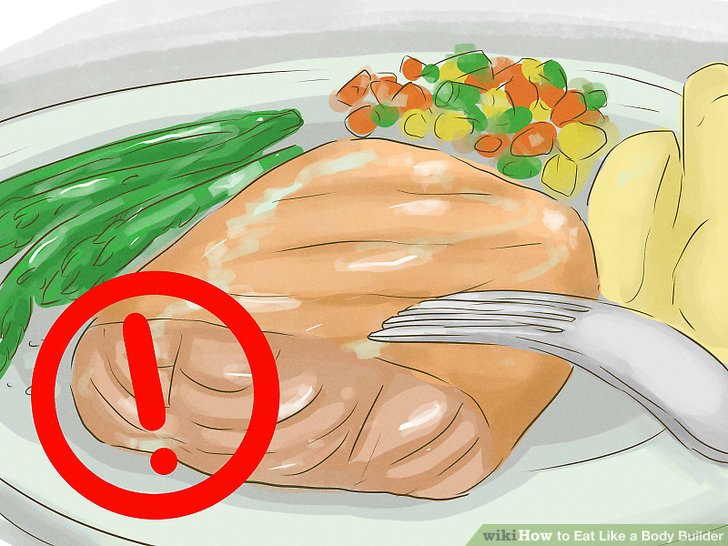
Many workout and fitness plans get derailed by some common mistakes and bad habits.
Be careful to avoid these…
Failing to fuel your body with sound nutrition — Nutrients are key to the regeneration of muscles. Your body needs protein and vitamins… not excess fat and junk food. Make sure what you take in each meal furthers your fitness goals, rather than hamper them. Go with lean meat, fruits and vegetables over processed and fatty foods. Make sure you eat regularly to keep your metabolism moving and to maintain energy for those workouts. Plan your meals like you plan your workouts if possible. It matters just as much.
Being active only during workouts — Most of us live sedentary lives. Workouts become harder to stick with when they’re the only time you’re physically active. Sitting around slows circulation and fat burning, counteracting your workouts. Do more outside the gym. Park the car and walk more. Play sports. Play with your kids or dog. Add hobbies and get out more. Or stay in, clean up the yard or pick up around the house. It’s true what they say about bodies in motion — tend to stay in motion, and that’s a good thing.
Drinking sports drinks instead of water — Sports drinks contain electrolytes. They also contain sugar, and not the good kind. Most sports drinks contain high fructose corn syrup, which sends your liver into overdrive to process the high sugar concentration, storing anything else as fat. Check the labels of sports drinks to avoid the extras that you don’t need, and only drink sports drinks when you need them — they’re not meant to quench your everyday thirst. Unless your workout is intense — and we’re talking marathon-intense — you probably don’t need a sports drink. If you need some flavor, try a spritz of lemon or lime. You may also try infusing your water with fruit (berries, pineapple, cucumber, orange, etc) to add flavor but no calories to your drink. Give them a try.
Working out without focus and efficiency — A good cardio session can take 20 to 30 minutes. Keep in mind that cardio doesn’t only mean running, jogging or an exercise machine either. Dancing is a form of cardio also! A good weight workout can take 30 to 45 minutes. That 60-second rest period becomes 3 minutes if you don’t watch the clock, making a 30-minute workout last more than an hour. Keep moving throughout the workout to completion. Too long of a rest period can decrease your workout’s effectiveness.
Working out without a battle plan — Some people walk into the gym and wing it — with no sense of how well they’re working out all their muscles, and then wonder why they don’t make progress. Write down a workout plan: Map out all your workouts to the set. Figure out your goals and set a plan to get there. Read books for ideas if you must, or take advantage of the trainers the gym makes available. The trainers can advise you on proper form, the right machines for you, the frequency of your workouts and so much more. The cost of one or two sessions is well worth it when you consider the invaluable advice you’ll get. Stick to your plan, and keep notes. A good plan allows you to monitor your progress.
Doing incomplete workouts — Doing cardio alone doesn’t develop fat-burning muscle like weights do. Focusing on chest exercises shortchanges other muscles that now have to compensate to balance an overdeveloped chest with your body. You don’t have to work out every muscle group every day. Alternate upper and lower body workouts, and mix up heart-strengthening cardio with strength training. Stay balanced, and your body will show the results.
Failing to push yourself— Pushing your body as reasonably far as possible is the key to making progress. An un-challenging 20-minute cardio session or easy sets don’t test your body. Make sure once you start finding sets easy that you increase the weight to continue meeting your goals.
Failing to vary your routine — Once your body accustoms itself to a routine, your growth slows, this is also referred to as a plateau. A workout strengthens your body by taking you beyond your comfort zone. Change exercises in your workout plan periodically. Switch your cardio from the treadmill to the exercise cycle. Use a barbell instead of dumbbells for those bicep curls. Take a class you’ve never tried –there’s something for everyone offered in most gyms these days. Don’t be afraid to take your workouts outside the gym also!
Trying to do too much at once — Enthusiasm can push you into doing too many sets, lifting too much or running too long. At best, your body’s extra soreness hampers future workouts, but injury is the true risk. If you push your body too far, it breaks.
Working out without stretching — Stretching beforehand prevents muscle cramps and injuries by loosening up your ligaments and muscles. Stretching after workouts loosens up your muscles and ligaments, promoting healing.
You also want to get enough rest between workouts to let your body heal. Your body needs time to repair the damage a workout does. Alternate days of strength training — do upper body one day, lower the next. This way, you’ll be sure to minimize damage. A little soreness is OK. After all, the tiny tears in muscles that result from working out create mass as they’re repaired. The most important thing to remember to do after a great workout is to nourish your body with protein, which helps to repair the muscles.
My name is Felicia Starks and I am a certified personal fitness trainer and lifestyle weight management specialist. My passion is optimum health & fitness as well as financial freedom and my mission is inspire and empower people to live a fit & healthy lifestyle while taking control of their own financial future. You’ve come to the right place if you need to lose belly fat and bring your sexy body back but you are…
Tired of working out hard and long yet seeing little to no results?

